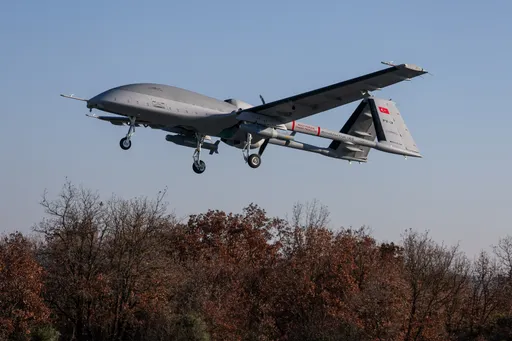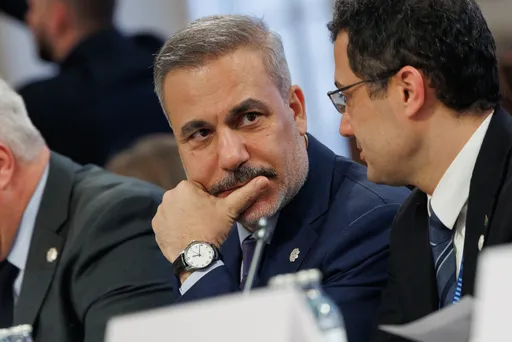As Israeli aggressions against Palestinians continue, so do myths and misinformation. The recent state violence and attacks committed by Israelis against Palestinians is again accompanied by a media bias that tends to obscure the context, causes, and consequences.
Some of the highest circulated global news outlets have stubbornly repeated Orientalist tropes, implicitly providing justifications for Israel’s position and rationalising human rights violations.
Anti-Palestinian violence in Jerusalem
As part of Israel’s ongoing ethnic cleansing campaign, numerous Palestinians are currently being forcibly expelled from their indigenous homes in Sheikh Jarrah, East Jerusalem, which, according to international law, is under illegal Israeli occupation.
Armed Israeli settlers carried out attacks and set Palestinian land on fire. Hundreds of Palestinians were injured by Israeli occupation forces which stormed the Al Aqsa Mosque and assaulted Palestinians during prayer in Ramadan.
Previously, armed far-right Israeli protesters marched through the occupied city in order to restore “Jewish dignity” in Jerusalem. They chanted anti-Palestinian slogans, such as “Death to Arabs”, “We’re burning Arabs today” and “May your village burn.”
The violence was well-documented on social media, where pictures and videos of Israeli attacks were shared. Some have referred to these targeted attacks on Palestinians as a pogrom. While these attacks appear particularly violent, they are neither new nor isolated incidents. Rather, they are Israel’s structural oppression and control of Palestinians.
Colonial media bias
While the dispossession campaign in Sheikh Jarrah was not a news story throughout, reports on the violence in Jerusalem’s Old City have framed settler violence and military occupation through a Eurocentric lens.
Rather than providing a historical and political context, some dominant media resorted to a recycling of familiar tropes.
The recent events were referred to as a “clash”, “tension”, “night of chaos,” or “bouts.”
An abundance of headlines has announced “clashes between Palestinians and Israeli police.” Western media outlets obscure the Israeli origins of violence while implying a false parity of power with the Palestinians.
In reality, one side is a nuclear-armed heavily militarised apartheid regime that has legal, political, and military control over the other side which is struggling for basic rights and sometimes mere survival.
Violence in Jerusalem is often presented as isolated moments of the “past couple of weeks” or as “the culmination of building tensions”, as if these were temporary incidents and not of structural nature.
At times, the violence is contextualised as “complex heightened tensions” when, in fact, the situation is quite simple. Rather than a temporary “clash,” Israeli brutality is a realisation of the continuing Nakba. Settlers are trying to expel indigenous Palestinians in order to expand the colonies.
While Israel has been rather transparent about these policies, some media outlets have employed euphemisms to rhetorically reduce the visibility of Israel’s violence. For example, a headline claimed that “Evictions in Jerusalem Become Focus of Israeli-Palestinian Conflict” in “a contested neighborhood”. The forceful expulsion of civilians and even the illegality of Israel’s occupation remain absent from Western media coverage.
Even though the tragic consequences of Israeli violence are well-documented, Palestinians are still presented as perpetrators. When Israeli forces stormed the Al Aqsa Mosque during Ramadan prayer live on camera, the BBC claimed that protesters “hurled stones at the police” and that Israeli officers “responded with stun grenades, rubber bullets and water cannon.”
The ideological use of language helps present Palestinians as initiators, who “clashed with Israeli police”, whereas Israeli occupation forces may appear as rather passive “police”.
In an article that begins with the phrase “Israeli police said” and, hence, quotes the Israeli state apparatus as the primary source, the reader learns that Palestinians “clashed with Israeli police on a nightly basis since the start of the Muslim holy month of Ramadan.” That Israel employs brutal state violence as a major method to maintain its colonial order is absent.
The myths of the two sides
The widespread equation of Palestinian and Israeli experiences in the media is further perpetuated in the presentation of these “clashes” as taking place between two ethnic groups.
The terms “Jews” and “Israelis” as well as “Palestinians” and “Arabs” are used as interchangeable synonyms. As a consequence, the colonial dimensions are obscured because Palestinians are not referred to as indigenous people and Israel is not identified as a colonial power. The struggle between civilians and a heavily armed military is thus converted into an ethnic or religious conflict.
When the recent anti-Palestinian march was acknowledged, it was blamed on “hundreds of supporters of an extremist Jewish supremacy group” without a mention of Zionism as the underlying ideology that is at the core of Israel’s settler project.
The undifferentiated equation of Zionism with Judaism can very well have antisemitic implications. While current Israeli violence may be more visible, it is debatable whether it classifies as extremist, given that the nature of Israel’s current existence as a supremacist and colonial project necessitates control over and the removal of indigenous Palestinians.
Some articles contextualised the violence with Islam. For example, readers would be told that “Israeli-Arab tensions have been on the rise since the start of the Muslim holy month of Ramadan” without further explanation. The lack of context leaves the reader with a superficial connection between that violence and Islam, such as in headlines like “Clashes, prayers in Jerusalem on Muslim Laylat al-Qadr.” That Israel regularly assaults peaceful worshippers in mosques and churches is less evident.
Given that Israeli violence is often framed as a “response,” one might get the impression that Palestinians would not have been attacked if they were not violent and, hence, have brought the violence on to themselves due to bad behaviour. This is crucial in colonial rhetoric.
The latest Israeli airstrikes on Gaza were as well portrayed as a “response” to Hamas which is depicted as “an Islamic group sworn to Israel’s destruction.”
That Israel is sworn to the destruction of Hamas and to Palestine as such is not part of the discourse. In fact, settler-colonial expansion is genocidal as such and necessitates the removal of the indigenous people. With the absence of legal, historical, and political dimensions, in much of the mainstream media coverage, the presence of Israeli forces on Palestinian territory is not questioned, nor are the reasons for Palestinian actions.
The latest events coincided with the release of a Human Rights Watch report which reiterates that Israel’s policies constitute crimes of apartheid and persecution. The report sheds light on the abusive practices of the Israeli regime’s “discriminatory rule over Palestinians” and the ways in which Israeli authorities “methodically privilege Jewish Israelis and discriminate against Palestinians”
Such realities, although defining the current violence, remain rather absent from the dominant media focus on Palestine, regardless of how obviously visible they are. In fact, it appears that “clashes”, “chaos,” and “unrest” indeed need to be understood as such, only when they disturb Israeli colonial control.
As Palestinians observe 73years of the Nakba this week, the daily instances of dispossession, expulsion, killings of Palestinians do not always make the headlines. These acts are part and parcel of Israel’s structural violence and, thus, do not qualify as a “tension” or “clash.”
























